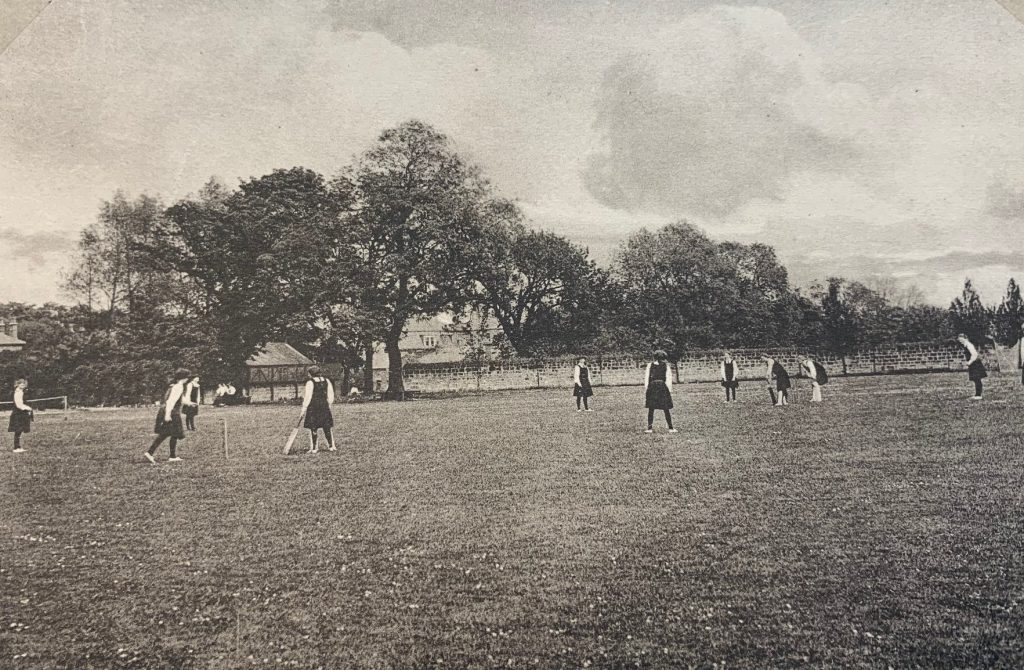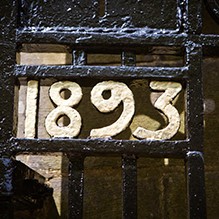Culture, Sport and Recreation in the early school
by Harrogate Ladies’ College historian, Dr. Paul Jennings
The ladies’ college was founded in 1893 as an offshoot of the boys’ school, Harrogate College, in Ripon Road. From the first it had its dedicated section in the School Magazine detailing the various cultural, sporting and recreational activities enjoyed by the girls. Then from 1905, by when the present school had opened, it had its own Magazine. This article looks at how it detailed some of those many activities in the late Victorian and Edwardian years.
A varied cultural life was important from the beginning. Older girls attended public lectures in the town, including those put on as part of the university extension movement, which sought to make the work of scholars more widely available. In 1906, for example, they were able to hear A. J. Grant of Leeds University, an authority on the French Revolution. The school had a Literary Society, which listened to extracts from the classics, like Chaucer and Shakespeare but also George Eliot’s The Mill on the Floss. There was a Historical Society and a Dramatic Society. Girls were encouraged to learn musical instruments.
One of the best documented activities was the Debating Society. It started off with Hockey versus Cricket but included more serious issues like votes for women in 1909, a debate interrupted by two militant suffragettes, bearing a large ‘Votes for Women’ banner. The report gave them short shrift, however, saying ‘their exhibition caused more amusement than consternation, and no one considering them worthy of being thrown out of the room, they retired with as much dignity as they could muster.’ The vote was 19 to 14 in favour of women having the vote, a dramatic contrast to just two years earlier when a similar motion was heavily defeated. Several College girls were later involved in the movement. Ella and Edie Westwood, were reported in 1913 as going off to a Suffragist Summer School, having taken part in the July procession, although it was noted that they were non-militant. A large majority defeated the motion that ‘Girls have a better time than boys’. A. Bowden opposed, arguing that boys had a large range of future occupations from which to choose, received better education, wore more convenient clothing, and while they could play all the girls’ games, the reverse was not the case. And they were physically ‘so much stronger’.

Harrogate Ladies College pupils at La Maison Blanche, Paris.
Perhaps one of the most ambitious cultural initiatives was the Branch School at St Germain-en-Laye, just outside Paris called La Maison Blanche, opened in 1907. Here older girls would speak only French, meet French girls, attend lectures at the Sorbonne and visit the city’s art galleries and places of interest. Sadly, it had to close when the War came but a special French house was opened at the school to continue at least the French speaking, usually with teachers themselves French. In the dining hall also, French was spoken at two tables and German at a third. German teachers at the school were another loss occasioned by the War.

Harrogate Ladies’ College girls playing cricket, which was first played at the school in 1898.
Sport for girls was at first not something that was felt to be properly ladylike, but this view was changing by the late-Victorian years, partly from the growing general feeling among women educationalists that girls should do just what the boys did. Skipping was said at first to be favoured at playtime but the author of the Magazine piece looked forward to cricket, lacrosse and football coming soon. Football, however, was still a step too far at this time. Gym was permitted, in ‘rational clothing’. But in 1898, two cricket elevens were formed, and the girls were looking forward to a match with the boys, although as the writer commented ‘it is rather wounding to our pride to feel we have no chance of winning, unless the boys were severely handicapped, playing left hand and with broomsticks’. Eventually girls were taking part in a whole range of sports and also including hockey, athletics, swimming, tennis and riding. Competitive matches were played against teams from other girls’ schools in Harrogate, like Dunorlan on Park Road, or from further afield like Bradford Girls’ Grammar School. Although sport seems therefore to have been popular with the girls, it never became the obsession that it did in boys’ schools, to the detriment there of more intellectual pursuits.

There was time allowed for private play and reading, but also lots of more organised recreation. There were many day trips to local places like the Dropping Well at Knaresborough or Almscliffe Crag. To Fountains Abbey eight girls cycled while the remainder went in a coach, horse-drawn still then. Or more ambitiously, a weekend at Scarborough in the summer of 1897 to mark Queen Victoria’s Diamond Jubilee. The girls were not, however, allowed to forget those less fortunate than themselves and charitable work in their spare time was stressed. An early entertainment in 1897 was one put on to raise money for the Indian Famine Fund, ‘a charity to which all loyal British subjects must feel bound to contribute to the best of their ability’. The school later supported a day school at Jaffna in Ceylon (now Sri Lanka). The poor and sick nearer home were also not forgotten. In 1897, the school’s Helpful Work Association made dolls and scrapbooks which were entered into a competition and then distributed to poor sick children. The Magazine commented that Ethel Mills’ Snow Queen, which won first prize, ‘seemed more fit to be placed under a glass case than in the hot little hands of children in a hospital ward’. In 1911, several girls visited the recently opened Home for Crippled Children in Tewit Well Road and the children in turn came to a Christmas party at the College. Money raised was to help send Dr Barnardo’s children to a new life in Canada.
Of course, we only know how these things were reported in the Magazine. Were there girls who did not like sport or relish a performance of Le Bourgeois Gentilhomme in the original French? Did all embrace the charitable work with enthusiasm? What we can say is that there was an immense and varied amount of activities on offer for the school’s pupils to enjoy.
If you would like to contribute to our Tales From The Archives series, please contact alumni@hlc.org.uk


